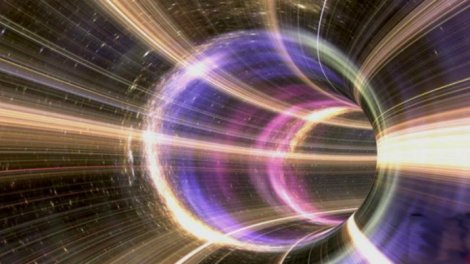Researchers have observed traveling three-photon bound states in a quantum nonlinear medium, a phenomenon that could help further the use of photons in quantum computing.
Scientists from the Massachusetts Institute of Technology (MIT) and Harvard University, in conjunction with scientists from the University of Maryland, Princeton University and the University of Chicago, found that when they excited a cloud of rubidium atoms through a sequence of laser pulses they could induce strong interactions between propagating photons. They tuned the strength of the interaction to make the photons form dimer- and trimer-bound states.
The researchers further found that the bound photons acquired a fraction of an electron’s mass. The newly weighed-down photons traveled about 100,000 times slower than normal, noninteracting photons.
The cloud of rubidium atoms was cooled to just one millionth of a degree above absolute zero, slowing the atoms to a near standstill. Through this cloud of immobilized atoms, the researchers shone a laser beam so weak that only a handful of photons could travel through the cloud at one time.
Researchers measured the photons as they exited through to the other side of the atom cloud. The photons streamed out as pairs and triplets, rather than exiting the cloud at as single photons.
In addition to tracking the number and rate of photons, the team measured the photons’ phase (frequency of oscillation) before and after traveling through the atom cloud. Photon correlation and conditional phase measurements revealed the distinct bunching and phase features associated with three-photon and two-photon bound states.
“The phase tells you how strongly they’re interacting, and the larger the phase, the stronger they are bound together,” said researcher Aditya Venkatramani.
The team observed that when three-photon groups exited the atom cloud, the photon phase was shifted, compared to when the photons did not interact, and was three times larger than the phase shift of two-photon molecules.
“This means these photons are not just each of them independently interacting, but they’re all together interacting strongly,” said Venkatramani.
The researchers developed a model to explain the cause of the phenomenon. They proposed that, as a single photon moved through the atom cloud, it briefly landed on a nearby atom, then moved on to another atom until it reached the other end of the cloud. The same process could occur with another photon traveling simultaneously through the cloud.
Through this process, a polariton — a hybrid photon-atom — would be formed; and two polaritons could interact with each other via their atomic component. While the photons exited the cloud, still bound together, the atoms would remain at the edge of the cloud.
The researchers concurred that the same phenomenon could occur with three photons, forming an even stronger bond than the interactions between two photons.
“What was interesting was that these triplets formed at all,” said Vladan Vuletic, a co-lead author of the study and the Lester Wolfe Professor of Physics at MIT. “It was also not known whether they would be equally, less, or more strongly bound compared with photon pairs.”
The entire interaction within the atom cloud occurs over a millionth of a second. According to the team, it is this interaction that triggers photons to remain bound together, even after they have left the cloud.
“. . . When photons go through the medium, anything that happens in the medium, they ‘remember’ when they get out,” MIT researcher Sergio Cantu said.
“If photons can influence one another, then you can entangle these photons — and we’ve done that — you can use them to distribute quantum information in an interesting and useful way,” said Vuletic.
Going forward, the team will look for ways to coerce other interactions such as repulsion, where photons may have a scattering reaction to each other.
“It’s completely novel in the sense that we don’t even know sometimes qualitatively what to expect,” Vuletic said. “With repulsion of photons, can they be such that they form a regular pattern, like a crystal of light? Or will something else happen? It’s very uncharted territory.”















